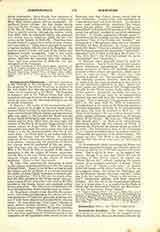

Communion Antiphon.— The term Communion (Communio) is used, not only for the reception of the Holy Eucharist, but also as a shortened form for the antiphon (Antiphons ad Communionem) that was originally sung while the people were receiving the Blessed Sacrament, but which has now been displaced, so as to follow that moment. In the Ambrosian Rite this antiphon is called the Transitorium, apparently because the celebrant after the Communion goes over (transit) to the Epistle side of the altar to read it. It is the fourth and last of the changeable parts of the Mass (Proprium) sung by the choir (Introit, Gradual, Offertory, Communion), and is at least as old as the fourth century. In St. Augustine’s time (d. 430), together with the Offertory–Antiphon, it had lately been introduced into Africa; he wrote a treatise (Contra Hilarium) to defend their use (Duchesne, Origines, 166, 179). But the present Communion is only a fragment of the older chant. It was originally a psalm, with the Gloria Patri, preceded and concluded by an antiphon. The First Roman Ordo (about 770) contains the direction: “As soon as the pontiff begins to give Communion in the Senatorium [where the most distinguished people stood] at once the choir begins the antiphon for the Communion, singing it alternately with the subdeacons; and they go on until all the people have received Communion. Then the pontiff makes a sign to them to sing the Gloria Patri; and so, when they have repeated the antiphon [repetito versu] they stop” (ed. Atchley, 144). This is the first definite rubric we have about the Communio. It shows us that it was to be sung while the celebrant goes around to communicate the people; and that it consisted of a psalm, sung alternately with its antiphon, as were, at that time, also the Introit and Offertory. So also Micrologus (Bernold of Constance, d. 1100) says that when the people Communicate, “meanwhile the antiphon is sung which takes its name from the Communion, to which a psalm must be added with its Gloria Patri if need be” (ch. xviii in Migne, P.L., CLI, 973 sq.). It was, then, like the other three parts that make up the Proprium of the choir, a chant to be sung so as to fill up the time while the clergy were engaged in some action.
The two changes in its history are that it has been removed to its place after the Communion and has been shortened. Its postponement began in the twelfth century. Abbot Rupert of Deutz (d. 1135) says: “The chant that we call the Communion, which we sing after the heavenly food, is a thanksgiving” (De div. off., II, xviii, in Migne, P.L., CLXX, 13 sq.), and Durandus: “The antiphon, which is called Post-communion by many because it is sung after the Communion …” (Rationale, IV, 56). But he goes on to describe the final collect as that which “is properly called Post-communion” (ib., 57). There are other instances of this antiphon occasionally being called Post-Communion. The reason of its removal seems to have been, on the one hand, the place of the Agnus Dei, which at that time began to be sung during the Communion, and to be repeated thrice, thus taking up more time (Gihr, Messopfer, 671); on the other hand, the gradual lessening of the number of communicants at high Mass. Its shortened form is part of the cur-tailing of all the prayers of the Mass that was the result of the multiplication of low Masses. Only in requiems have we a remnant of the older form. Here after the first verse (Lux aeterna) follows an antiphon (Cum sanctis tuis), then the “Requiem ternam”—last vestige of the psalm—and the antiphon is repeated. Otherwise the Communion is always one short antiphon, sung by the choir immediately after the Agnus Dei, and said by the celebrant after the Communion. It is generally a verse from Holy Scripture, referring, not to the Holy Eucharist, but rather to the feast which is celebrated or to the special season (de tern pore) or to the purpose (in votives) for which the Mass is offered. But not seldom it is a text taken from some other source, or specially composed for this use. It is always said by the priest at the altar. Since the common use of low Mass, in which he substitutes the choir’s part himself, the rule is that the priest also says whatever is sung by them. As soon as he has arranged the chalice and paten in the middle of the altar (at high Mass the subdeacon does this, and takes them to the credence-table) he goes with joined hands to the Missal, which has been replaced at the Epistle side, and there, the hands still joined, reads the Communion from the Pro prium. He then comes back to the middle for the Dominus vobiscum before the Post-Communion.
ADRIAN FORTESCUE

